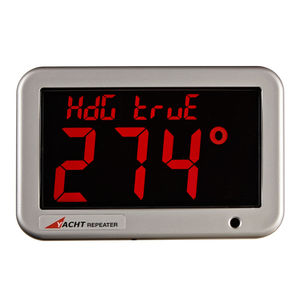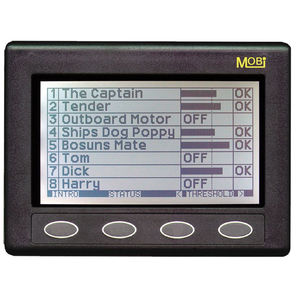
- Equipment
- Safety
- Leak detector
- Nasa Marine
Gas detector leakfor boatsbilge
Add to favorites
Compare this product
Characteristics
- Type
- gas, leak
- Application domain
- for boats
- Applications
- bilge
Description
Liquified petroleum gas (LPG) is an invaluable source of energy on many sailing vessels. It should, however, be used with great care. In its gaseous form it is heavier than air and will always collect at the lowest level in a vessel. Any leak of gas, any spillage of liquid could sink to the bilge and, unable to escape, build up to explosive proportions.
The NASA Marine gas detector system warns if the level of LPG rises above 10% of the lowest explosive limit (LEL) giving adequate warning of the need to ventilate the area before a dangerous situation occurs. The system consists of a cabin mounted monitor and a remote sensor. The monitor gives visual and audible warning if gas levels at the sensor rise above 10% LEL and will warn of fault conditions such as damaged cables etc.
The splash proof sensor is supplied with a 5 metre cable and has a test button to check the system right through to the gas sense element. The sense element is user replaceable in the event of contamination. Supplied with power cable.
Technical Specifications
Supply voltage 9 to 15 volts
Low power consumption (typically 30mA)
Fail safe system warns user of system faults
Continuous performance monitor
Spare low cost plug in catalytic sensor available
Dimensions – W 134mm, H 70mm, D 28mm
LEDs show system status continuously
Two tone alarm activates when gas level reaches 10% of lower explosive limit
Catalogs
No catalogs are available for this product.
See all of Nasa Marine‘s catalogsRelated Searches
*Prices are pre-tax. They exclude delivery charges and customs duties and do not include additional charges for installation or activation options. Prices are indicative only and may vary by country, with changes to the cost of raw materials and exchange rates.






